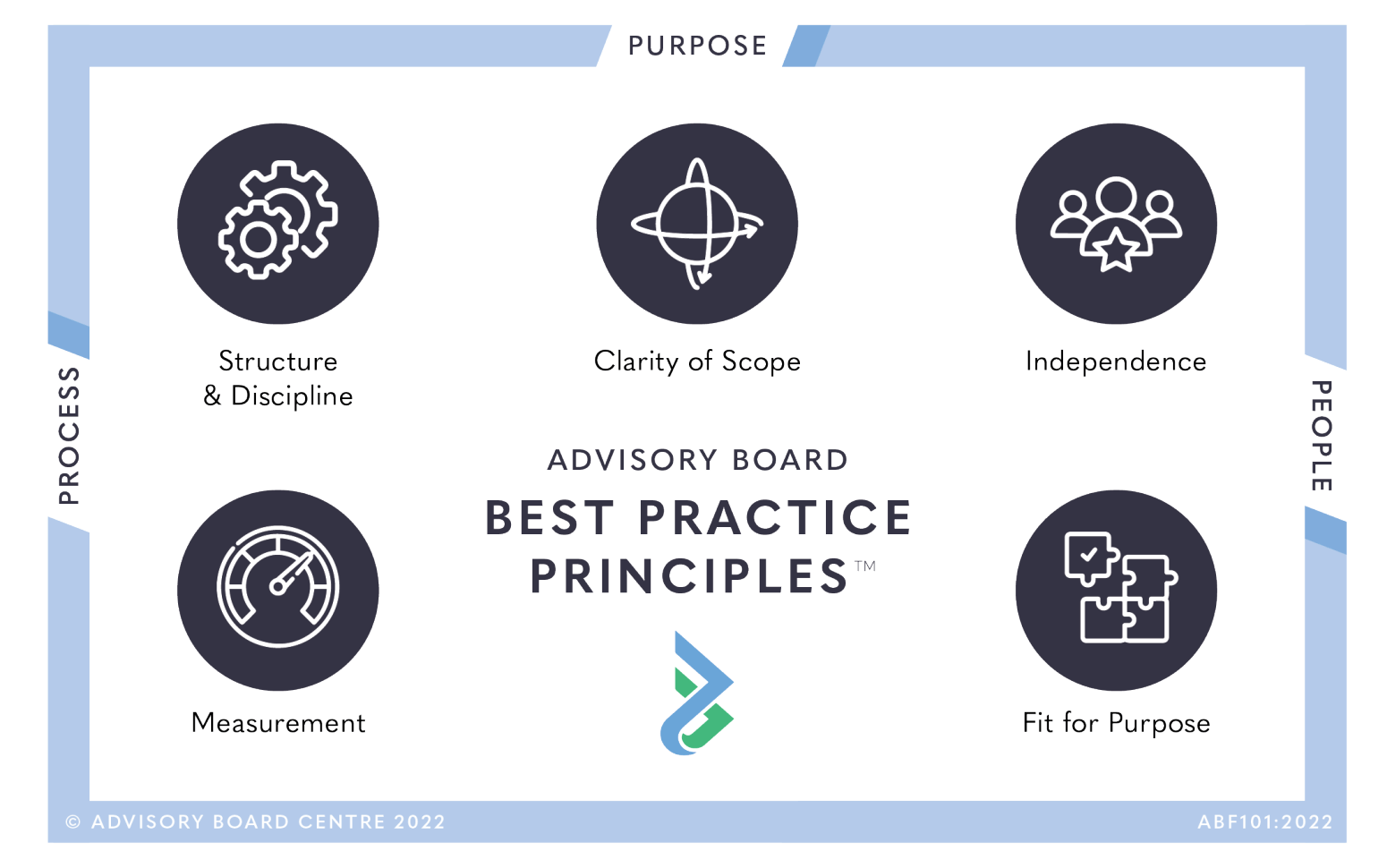
Structure and Discipline | Advisory Board Best Practice Principles
Fundamentals
Published 25 September 2020
The ABF101 Advisory Board Best Practice Framework™ has been carefully developed to respect and support the balance required between purpose, people and process to create a strong foundation to Advisor engagement.
The ABF101 Framework is based on five key principles –clarity of scope, independence and fit-for-purpose, measurement, structure and discipline.
Let’s explore the “Structure and Discipline” principle.
Structure and Discipline for Advisory Boards
Every organisation will have their own approach to strategic management. The ABF101 Framework is not about red tape, regulations and procedures. It is about flexibility, enablement and harnessing the powerhouse of expertise to make things happen. Inherently it is purposeful, flexible and agile.
Within the ABF101 Framework, Structure and Discipline and Measurement principles underpin the Advisory Board’s PROCESS section.
Structure and Discipline: The advisory board structure is clearly outlined with management protocols to establish, manage, and review effectiveness.
By taking the time to clearly define the Advisory Board structure it allows for elevated advisory conversations. Meetings are not dominated by process discussions. This allows for efficient operations of the Advisory Board including internal management, preparation from the organisation and the advisory members, and high quality, future-focussed discussions aligned to the organisation’s priorities.
A disciplined approach supports the transition from informal mentoring and coaching to a formalised Advisory Board. This is an important step for emerging organisations to support growth and scale ambitions. The Advisory Board Centre’s State of the Market Report identified that while emerging business had a high level of ambition to implement an Advisory Board, over 50% of these engagements were postponed due to the firm’s lack of planning, resources, and clarity of expectations.
It is estimated that 6% of businesses in the OECD ($1.5m to $100m in revenue turnover) show high potential to engage an Advisory Board, and the number of Advisory Boards established to support them is set to grow. In 2018, 92% of advisor appointments were for new Advisory Boards, and 8% were for existing Advisory Boards.
With many organisations looking to establish their Advisory Board for the first time, both the organisation and the Advisory Board members will benefit from structure and discipline.
The ABF101 Framework provides a balanced approach to Advisory Board establishment and facilitation. It recognises the balance necessary for defining a purpose that is unique to the organisation and applying good governance of people and processes.
Importance of Structure and Discipline for Organisations
- The advisory board aligns to the charter, broader governance system and management frameworks
- Disciplines and protocols enable the organisation to manage, follow through, and be focused on outcomes
- Information, data, reporting formats, protocols and processes are concise, clear, and enacted
- Evaluation of outcomes and effectiveness enables the advisory board to evolve with the organisational needs
- For the process to work effectively, executives within the organisation need to be committed to the process
- Protocols provide an ethical framework for management of roles and responsibilities
Importance of Structure and Discipline for Advisors
- Roles are clearly defined enabling members to be effective
- Members have a common understanding of expectations and protocols including behaviours of do’s and don’ts
- Reports appropriately inform members to enable quality input
- Members gain transparency in how their input is used and how they are represented
- Provides clarity and commitment for member terms of engagement
Considerations for Application
- A clearly defined advisory board establishment process is completed
- Management of protocols internally are clear including the authorised sponsor and the secretariat function
- Expectations in management of information, and authorisation are clearly defined
- Conducting an advisory board member orientation
- Meeting frequency, regularity, timely agenda, reports, and minutes management Advisory board report preparation and content
- Ethics guidelines and code of conduct included in the advisory board charter
- Scheduled reviews of key performance indicators, member evaluations and performance outcomes
- Preparation and timeliness
Updated: June 2024, based on the ABF101 Advisory Board Best Practice Framework Third Edition.







